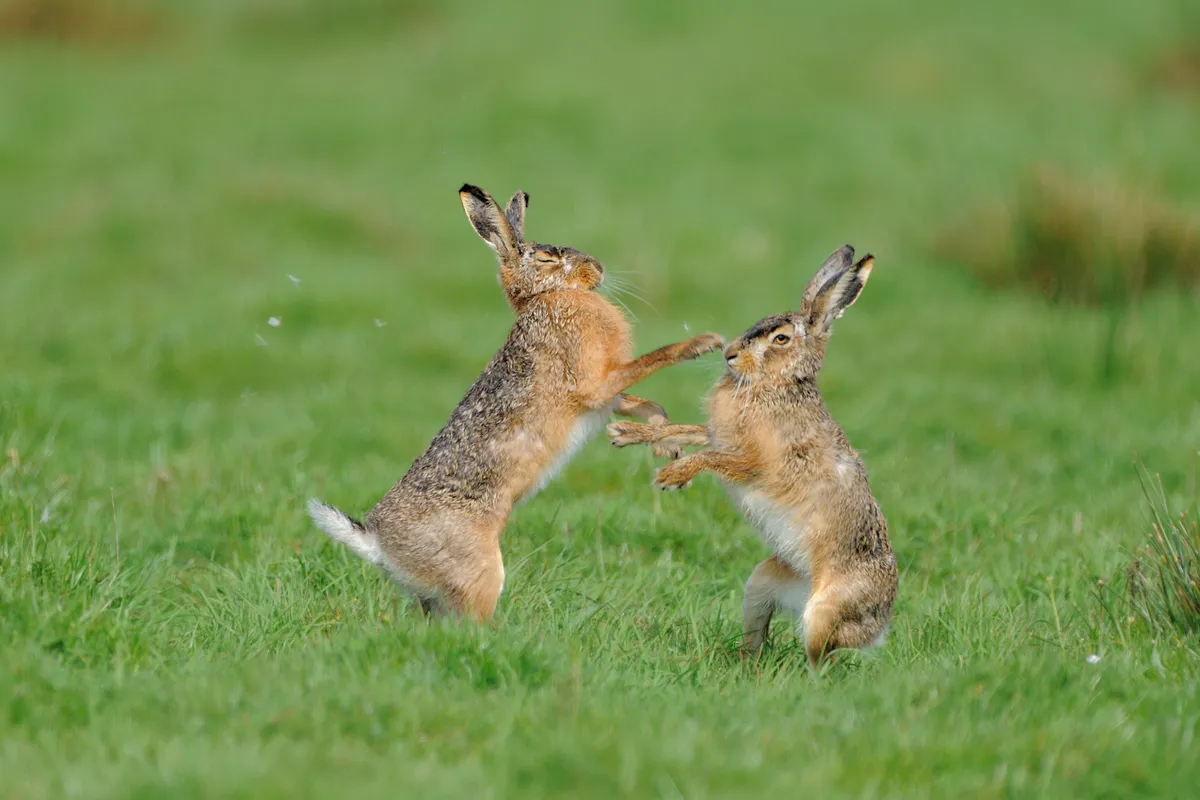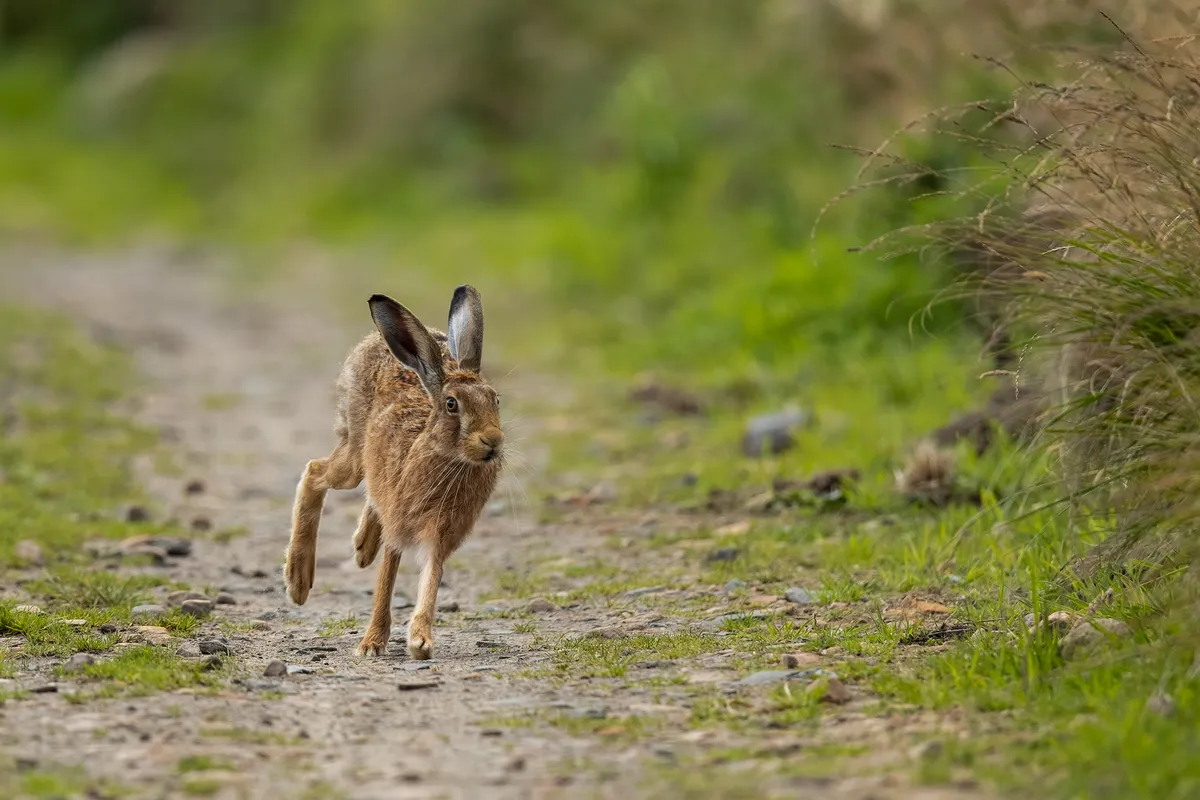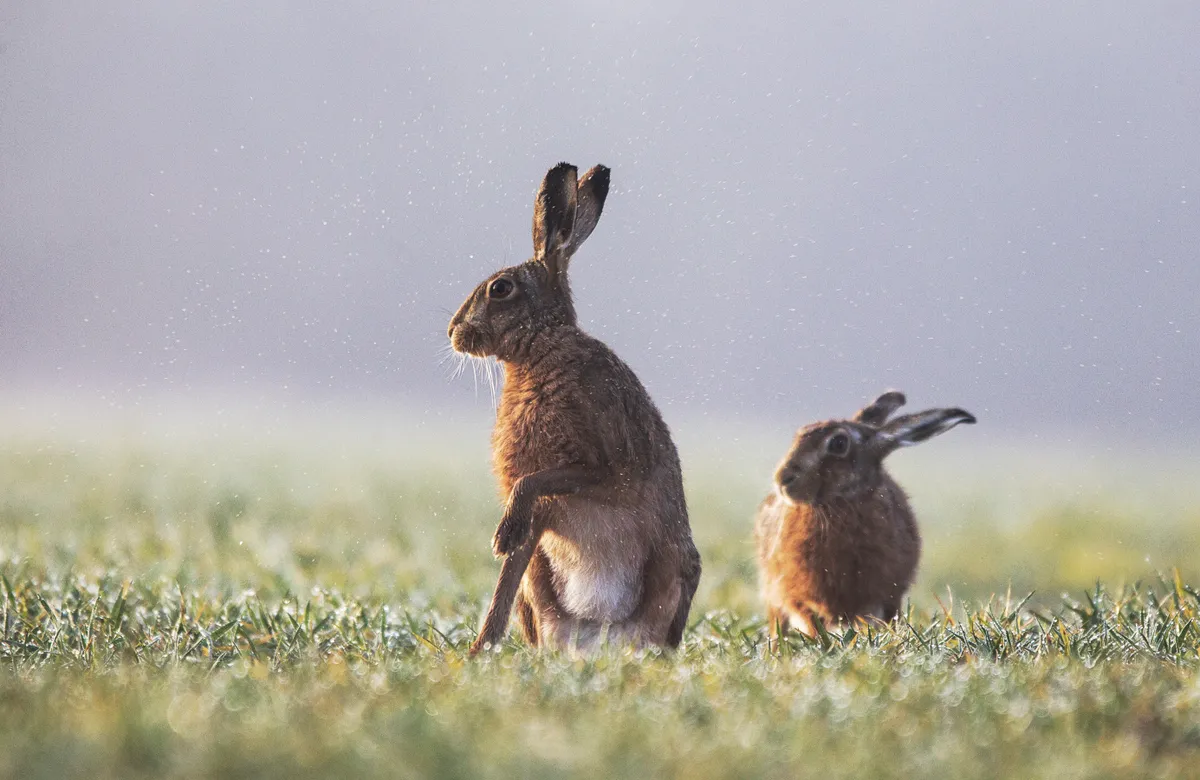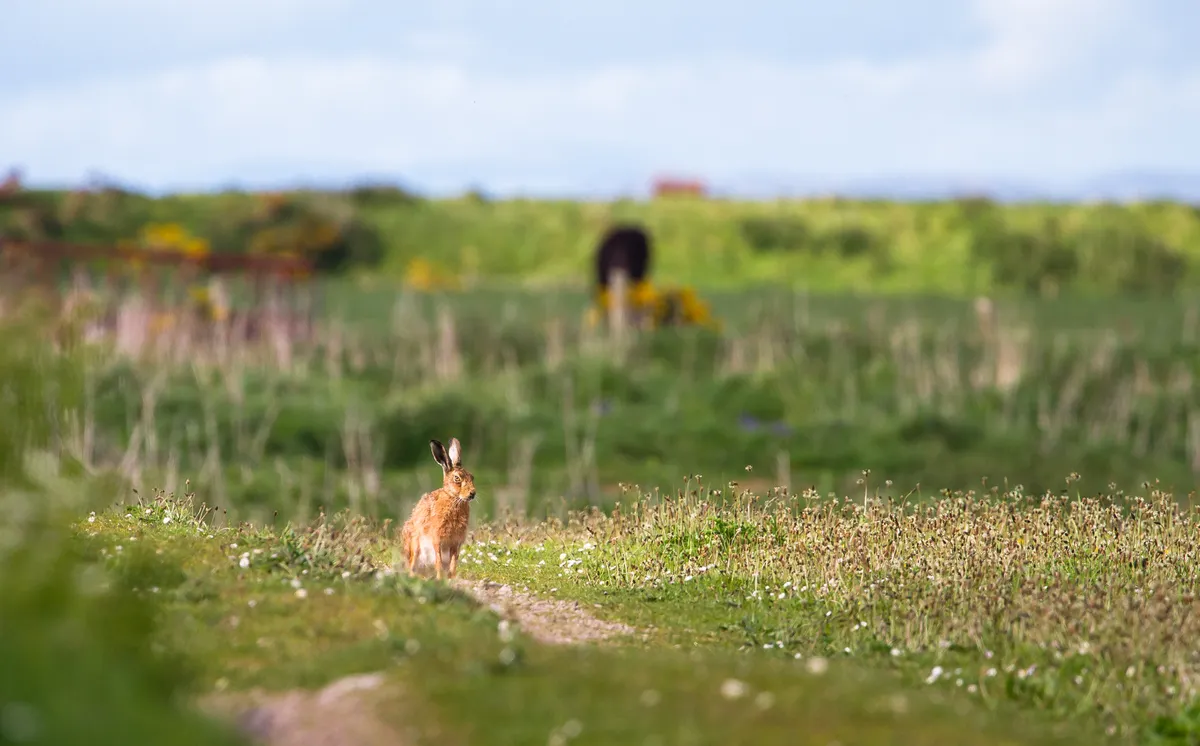Early spring is usually the best time to see brown hares, because this is when their breeding season gets underway. If you’re lucky you may even spot them boxing, though you may need several visits to be sure of seeing this spectacle! Celebrated throughout the ages, it was undoubtedly this very behaviour that inspired Lewis Carroll’s March Hare character in Alice’s Adventure’s in Wonderland.
What are hares?
Hares belonging to the genus Lepus and are known for their speed and powerful back legs.
Why do brown hares box?
It was often assumed that the boxing was rival males fighting each other for mating privileges, but it has now been established this bout of fisticuffs is usually instigated by females fending off any overly amorous males. While hare society is not particularly complex, a dominance hierarchy tends to develop among the males, or bucks, whereby more experienced individuals will drive away those younger and less assertive, particularly during the mating season between March and July.
Nevertheless, with the female coming into oestrus for just a day each month, she often becomes the subject of considerable attention at this time. When fed up with this relentless hectoring, she will rear up on her hind legs before using her front legs to rebuff any suitor whose advances are not appreciated. Those males unwilling to take ‘no’ for an answer will then reciprocate this behaviour, with fur frequently flying whenever contact is made.
For the experienced males, however, persistence appears to pay off, as they eventually break down her resistance and copulation ensues. With mating the sum total of the male’s involvement, his focus then switches to finding yet more receptive females. Capable of producing as many as four litters of between one and four leverets during a favourable breeding season, the females’ high productivity will help offset hares’ terribly short lifespans, where any individual reaching its second birthday can be considered to have beaten the odds.

Where can I see brown hares?
The number of hares on farms and grassland can differ widely across the countryside, with some locations holding healthy populations, while others appear to hold none. Generally speaking, the arable heartland of southern and eastern England is their stronghold, but the estimated British population of 800,000 has fallen substantially from a high point of about four million during the late Victorian era.
Hares use well-established trails across fields and you can sometimes spot regularly spaced ‘bound marks’ where the impact of their large hind feet produces a shallow depression in the path’s surface. Also look out for the gaps in hedgerows made by hares passing through.
When not boxing, feeding or interacting with their compatriots, hares rest in any fields with good all-round visibility. Hunkering down in the vegetation or digging out a shallow impression in the ground, called a form, helps keep them out of sight and protects them from the worst of the elements. Unfortunately, modern intensive agriculture has reduced the availability or long grass and vegetation.
When trying to views hares, break up your outline by using a hedge or a car as a hide, for example. On private land, such as a farm, please stick to the public footpaths. And do remember that if you are on foot, remaining downwind will help you get closer to the action.

Where do brown hares come from?
Despite the brown hare being easily the more familiar of our two hare species, it is only the lesser-known mountain hare that is in fact native to Britain. Originally emanating from the grassy plains of Asia, brown hares are believed to have been introduced either during, or before, Roman times. Favouring open habitat, the hare found such an abundance of farmland and grassland in Britain that the only areas seemingly avoided by this inveterate nibbler were our mountains and moorlands – niches that may well have already been filled by the brown hare’s montane cousin.
Brown hares are believed to have been introduced either during, or before, Roman times
What's the difference between hares and rabbits?
Adult brown hares can be distinguished from our only other lagomorph, the rabbit, by their longer limbs, larger heads and longer, black-tipped ears. When running, their distinctive tail is kept down, revealing a black upper surface as they sprint away from any perceived threat at speeds up to 70kph. In contrast to semi-subterranean rabbits, hares spend their entire lives above ground, and though largely nocturnal, are routinely active at dawn and dusk, too.

How do brown hares communicate?
Unless physically attacked, brown hares make very few vocalisations, preferring to use their feet to convey messages. They often thump their front feet when challenging another hare, but only tend to strike the ground with their hind feet when warning of mortal danger – such as the sudden appearance of a fox.
Read more guides to UK wildlife:
Best places to see brown hares in the UK

RSPB Loch Gruinart
Famed for its overwintering populations of barnacle and white-fronted geese, the grasslands on Islay are also a great place to look for boxing hares as the geese prepare to fly back to their breeding grounds in Greenland.
WWT Welney
The fen grasslands surrounding this wetland centre in Cambridgeshire are a great place to look out for hare activity and WWT conducts hare walks right up until the end of February.
RSPB Havergate Island
This small, narrow islet shelters behind Orford Ness off the Suffolk coast, and while best known for its breeding population of avocets, also has a remarkably tame population of brown hares.
Royston and Baldock
The large arable farms surrounding Royston and Baldock in Hertfordshire, as well as those fields bordering the A505, which links the two towns, have a healthy population of hares.
Brockholes
Managed by the Lancashire Wildlife Trust, this 100ha site near Preston has an array of habitats, including grassland. Its resident population of hares were filmed for Countryfile back in 2017.
Main image: Brown hares are under threat in the UK due to habitat loss from large scale farming. © Andy Rouse /NPL/Getty
